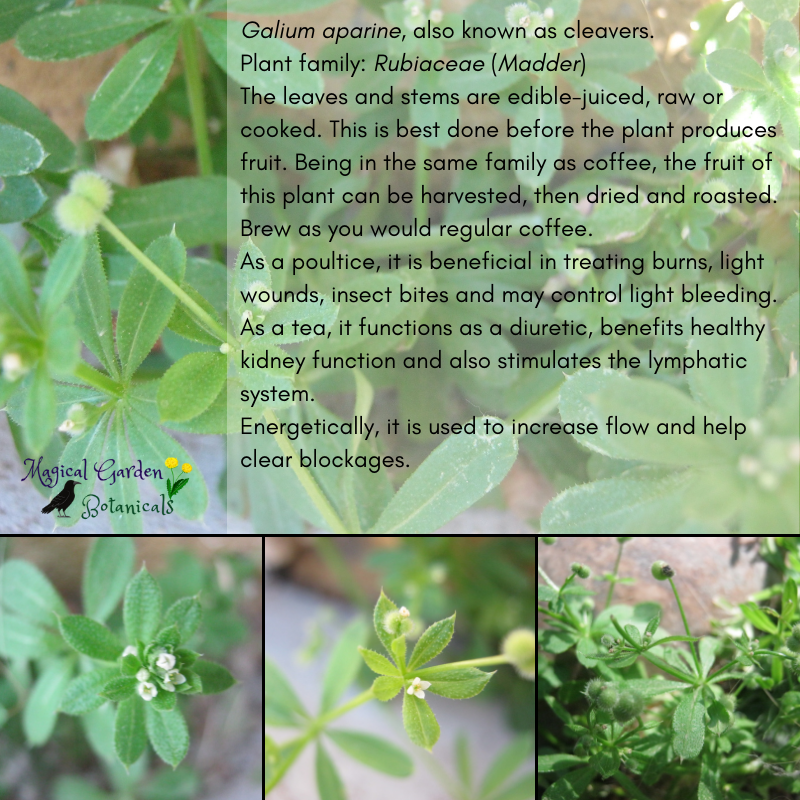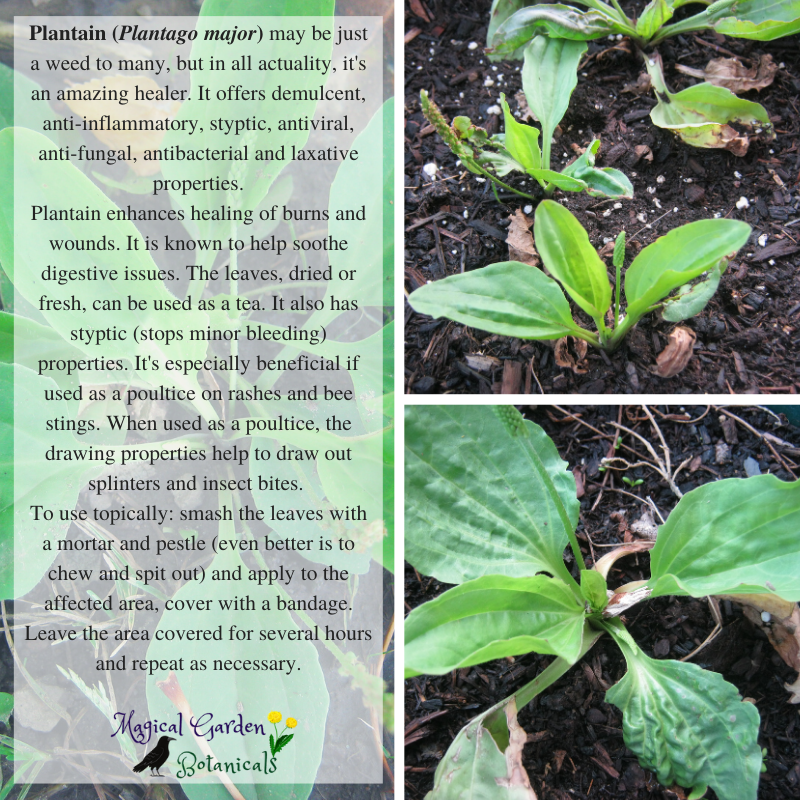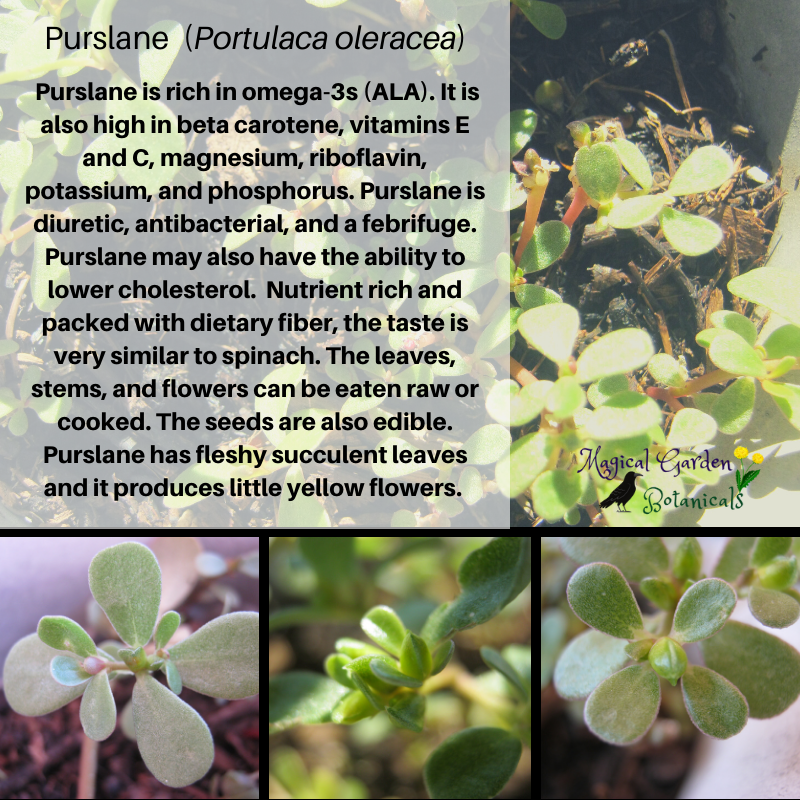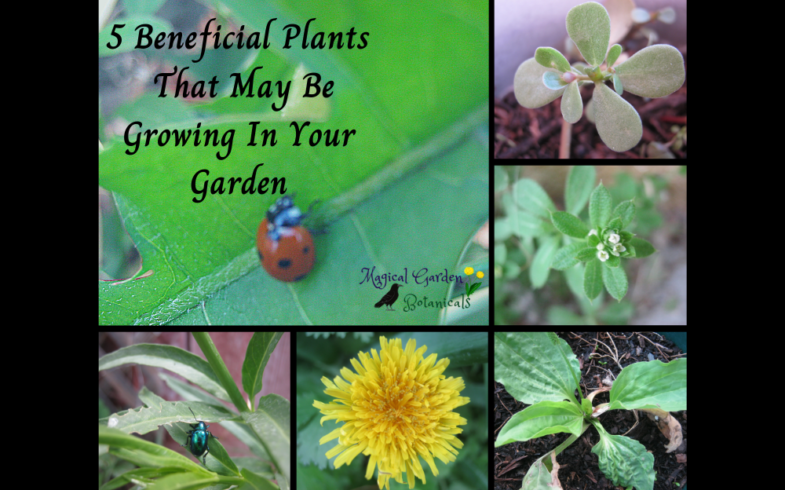5 Beneficial Plants That May Be Growing In Your Garden
I overheard someone at the grocery store complaining about having to weed their garden. I began to wonder about the varieties of weeds they may have growing in their yard. Also, were they aware that many plants referred to as weeds actually offer healing properties? Don’t get me wrong, I have my own fair share of plants that I remove from my garden, too. And this is only to protect the plants I am currently nurturing. However, there are many plants that I haven’t personally invited into my garden that are more than welcome to stay.
Wellness Seeks You
I have observed that the majority of the healing plants we seek are present in our local environment. Occasionally, a friend may share that they purchased an exclusive herb for medicinal or healing applications. I order some herbs once in a while, however, I have learned over the years that many plants offer a multitude of applications and benefits. With this information, I have made an effort to learn about the variety of benefits each plant has to offer. Rather than a “this one plant is good for this particular ailment” type of approach. Here are five plants that are nurtured and grown for nourishment and medicine in my garden.
Dandelion
One of these, which has always graced my garden, is my beloved dandelion, or Taraxacum officinale. There’s a lot of information available about dandelions, everything from their ability to cure cancer to delicious recipes. Perhaps in this respect, in all of its simplicity, it is one of the most diverse plants. Dandelion is rich in vitamins A, B, and C, and minerals such as iron, potassium, calcium, phosphorus, and boron. Dandelion can also contain up to 25% inulin, a prebiotic fiber. All parts of the plant can be eaten, including the flowers, stems, leaves, and roots. In regards to healing, each part of the plant offers benefits, as well. The entire plant, or just the root, can be used to make a tincture. The flowers are wonderful for making infused oils. These oils can be used for skin soothing purposes or to make healing and nourishing balms, salves, and body butter. The stalk or stem contains a milky latex that helps to get rid of warts. Apply the fresh milky liquid to the area several times a day. It can take a few weeks for the wart to disappear.
Dandelion is beneficial to the liver, kidneys, and digestive system. It improves bile flow and works as a mild laxative. Also, due to its bitter components, it may stimulate appetite and improve the absorption of nutrients. The greens act as an effective diuretic without depleting potassium. Contrary to many pharmaceuticals, the greens increase the body’s potassium level. Dandelion is often used in the treatment and prevention of gallstones. Benefits can be seen by drinking 1-2 cups of dandelion tea per day. Dandelion may also aid in regulating blood sugar and cholesterol levels. There have also been promising studies conducted on their ability to prevent tumor growth through stimulated macrophage activity. Continue reading to learn more about identifying and harvesting dandelions.

Cleavers
Another plant, and the newest, to knock on my door is cleavers or Galium aparine. When I say it knocked on my door, it may as well have knocked! This spring I noticed it growing in the front yard, right by the front door in a previously unoccupied little pot and also in a separate planter. Later on, I also found it in the back yard, again close to the door. The leaves and stems are edible- juiced, raw, or cooked. This is best done before the plant produces fruit. As a tea, it functions as a diuretic, benefits healthy kidney function, and also stimulates the lymphatic system. As a poultice, it is beneficial in treating burns, light wounds, insect bites, and may control light bleeding. Cleavers can also be made into a tincture. As an ointment, it is beneficial for the healing of ulcers, cysts, and other skin conditions. The root can be used to create a permanent pink to red dye. A wash can be made with the leaves and used to treat a sunburn and other types of skin irritations. An excellent plant for detoxing the body, cleavers makes its appearance in the spring- a time when many are thinking of “spring cleaning” not only their homes but their bodies as well. Additionally, on an energetic level, it is used to increase flow and help clear blockages. Continue reading to learn more about cleavers.

Plantain
Plantain, or Plantago major, is also a guest of honor at our home. However, it didn’t make its appearance like some other plants have. I actually had to uproot some of these plants from my parents’ ranch to replant in my own garden. Plantain is wonderful for many external and internal applications. The seeds offer similar benefits as psyllium seeds. With a little bit of nurturing, plantain is now happily thriving as a potted plant in my garden. I enjoy having this lovely and soothing healer in my garden.

Narrow-leaf Milkweed
Narrow-leaf Milkweed, or Asclepias fascicularis, literally grows like a weed in my garden. I usually thin out a few areas, otherwise, my yard would be covered with it. I always make sure to leave a few patches of this plant as it’s a well-known source of food and habitat for monarch butterfly caterpillars. Milkweed also supports a variety of pollinators. So while milkweed may not be directly healing to me, it is ecologically beneficial.

Purslane
Purslane, or Portulaca oleracea, is also a plant I introduced into the garden several years ago. I will often snack on the leaves when I am out in the garden, but most of the time I add the leaves to our veggie juice. Purslane is rich in omega-3s (ALA). It is also high in beta carotene, vitamins E and C, magnesium, riboflavin, potassium, and phosphorus. This lovely plant produces little yellow flowers and has fleshy succulent leaves. Always use caution when wild foraging, know exactly what you are harvesting. A poisonous plant that looks similar to purslane is called spotted spurge (Euphorbia maculata). The stems of spurge produce a milky white sap, avoid this plant.

Beyond the medicinal benefits of the aforementioned plants, weeds in our garden also offer other benefits. They help add nutrients to the soil and also naturally fertilize the soil if left to run their course. In some cases, plants help to prevent soil erosion as well. Weeds also attract many beneficial insects, think- honey bees! By allowing these plants to thrive, you may find that your garden more efficiently retains moisture. Remember, most weeds are growing in your yard because the conditions are ideal for them. Take a moment to connect with the plants and recognize the healing they have to offer. Instead of pulling weeds, let’s harvest the weeds.
It is always wise to thoroughly learn about any plant before harvesting. Consult more than one source and always use extreme caution as some plants have poisonous look-alikes. Be aware of the benefits and precautions of any type of plant that you are working with. Be mindful to not over harvest the plant and always leave some intact plants. Also, avoid areas that may have been sprayed with chemicals and roadsides or high traffic areas.
As with any supplement, always consult a qualified health professional prior to making dietary changes, especially if you are on any medication or are experiencing health issues.
Sources:
https://plants.usda.gov/core/profile?symbol=POOL
http://www.calflora.org/cgi-bin/species_query.cgi?where-calrecnum=6803
https://www.calflora.org/cgi-bin/species_query.cgi?where-calrecnum=747

Daughter of the Earth, Mother of her creations. Ivanna (Evie) doesn’t care for titles, but the ones that fit best are homeschool mom, herbalist, and blogger. Her greatest joy is guiding others to find true wellness within themselves and Mother Earth. When not spending time with her beloved family, she can be found researching everything related to holistic wellness, crafting herbal remedies, or visiting with the plants in the Magical Garden.





Response to "5 Beneficial Plants That May Be Growing In Your Garden"
Awesome info!!! A super great read! 💖
Thank you, Mona! 😀